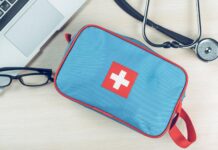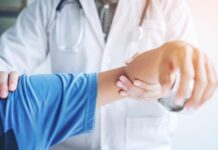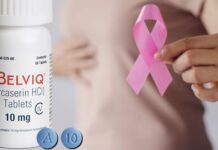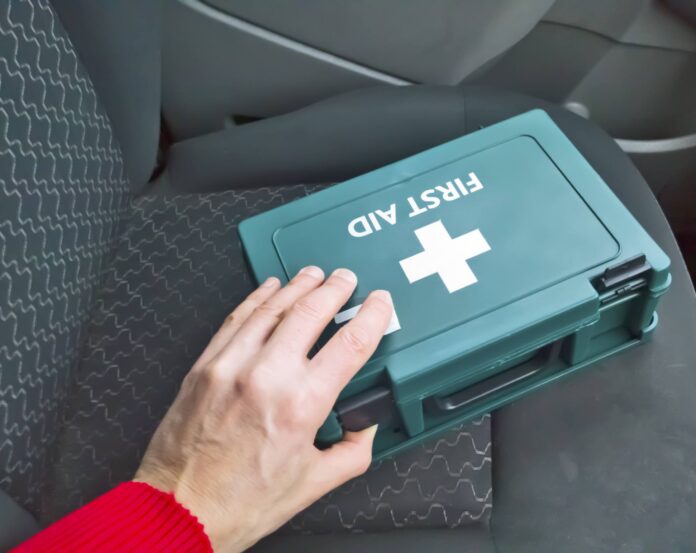
When minor injuries and accidents occur at home you want to be able to treat them adequately and promptly to reduce the risk of infection and to aid in the healing process. The best way you can do this is by having a well-equipped first aid kit at home. We have put together a list of the most important items that should be included in your kit.
1. Antiseptic wash and ointmen
Antiseptic wash and ointments work by slowing the growth of microorganisms. By washing and/or applying antiseptic ointment to minor cuts, grazes, and scrapes, you can minimize the number of germs on the wound and reduce the risk of infection. Antiseptic solutions come in many forms such as washes, ointments, wipes, and sprays.
2. Instant ice/cold packs
Ice is a great way to treat many injuries. A cold pack or ice can be used to alleviate pain from bites and stings and can reduce itching. They are great to use on twists and sprains as they slow the blood flow to the area, which will decrease bruising and swelling. Having a few instant cold packs in your first aid kit is great for those times you might not have ice ready to go in the freezer.
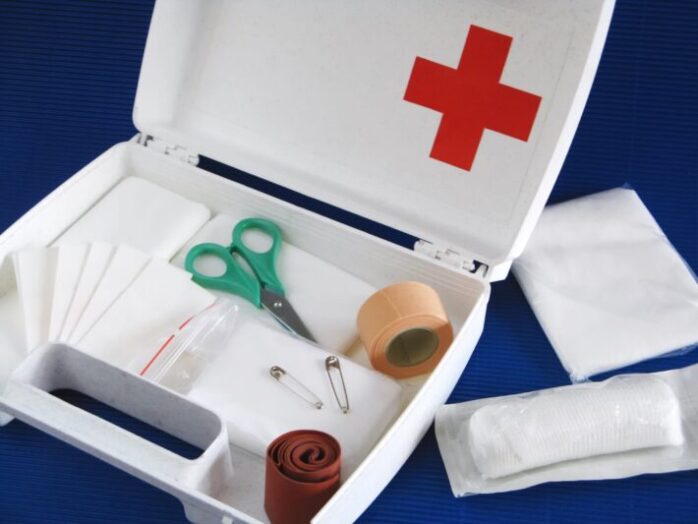
3. Adhesive bandages
Adhesive bandages, more commonly known as Band-Aids here in Australia, are a necessity for your first aid kit and are typically used for minor injuries such as scrapes, blisters, and small cuts. They come in various shapes and sizes to suit different parts of the body. You should have a selection of traditional Band-Aids and be sure to include some waterproof, antibacterial, and butterfly clip style bandages to your kit also.
4. Disposable gloves
Gloves are highly important, not only to protect the person giving the first aid but also the person receiving it. They reduce the risk of transmitting germs and bacteria and minimize the risk of infection by keeping the area sterile and clean. They are useful to have at home as they enable you to clean up blood or bodily fluids safely. You can purchase gloves in various sizes and there are latex or latex-free options available. You can select the glove type that is suited to your needs, as long as it is sterile.
5. Scissors
Most of us have scissors in the house somewhere, however, a quality pair of medical scissors is an invaluable item that should be kept in your first aid kit. They are easier and safer to use than regular household scissors. There uses are endless, from snipping medical tape, cutting gauze to size and trimming clothing that you are unable to get out of the way to treat an injury.
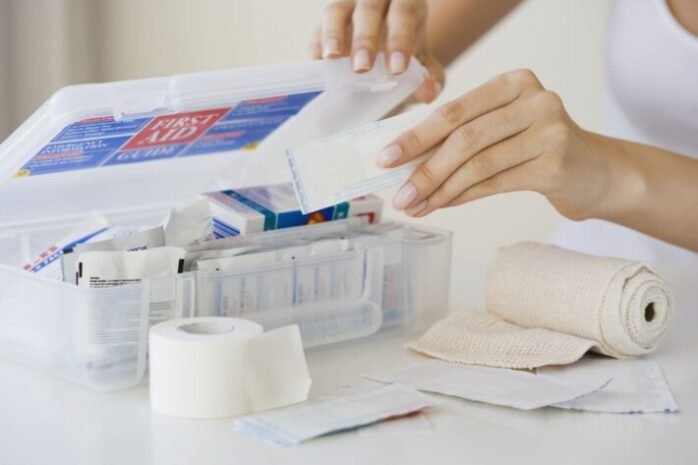
6. Medical tape and sterile gauze pads
Gauze pads are typically used to stop bleeding and to treat bigger wounds that traditional Band-Aids aren’t suitable for. It is a smart idea to have bigger sizes of gauze on hand rather than smaller ones. If a smaller one is required, you can just cut it to size. Medical tape is used to keep the gauze or other types of dressing on a wound.
7. Thermometer
A thermometer should be an essential part of your first aid kit. They are designed to test the body’s temperature and are a great way to monitor fevers. When you are looking to purchase a thermometer, look for a digital one, they are far more accurate. There are few methods to taking a temperature it can be done rectally, orally, via the ear or under the armpit. The armpit tends to be the least reliable.
8. Tweezers
A good quality pair of medical-grade surgical steel tweezers are a must-have for your kit. There are a few options to choose from, however, for a basic kit you should choose a pair of needle-nose tweezers, they have a very fine point that is perfect for removing splinters, stingers, thorns, and ticks.
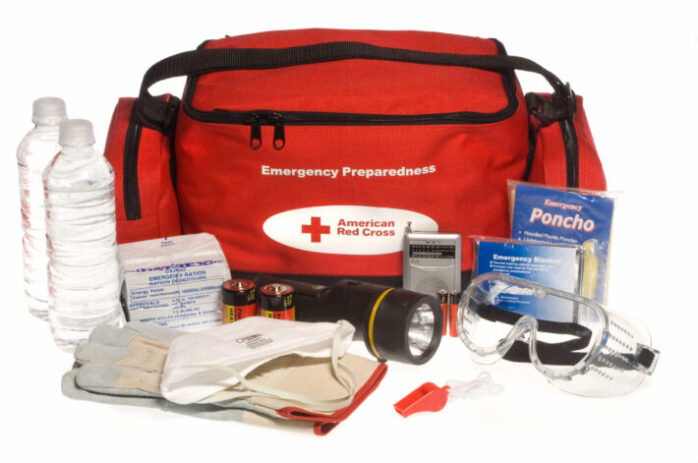
9. Elastic and non-elastic bandages
You should have a variety of elastic and non-elastic bandages in different sizes and shapes in your first aid kit. Elastic wraps are stretchy and can be used for a multitude of purposes such as wrapping a sprain or holding heat or cold pack in place. Nonstretch bandages are more commonly used for compression purposes and to stop bleeding.
10. The sterile eyewash solution
Eyewash solution is used to flush out substances that may potentially damage the eye if left untreated. Common uses include eyelashes in the eye and sand and dirt particles. An eyewash solution is suitable for use for minor irritants to the eye.
Medications for first aid kits
Keeping medications in your first aid kit is not advisable. First aid is defined as the provision of emergency treatment and life support for people suffering injury or illness. Distributing medication to others is not generally apart of this definition. The First Aid in the Workplace Code of Practice state that first aid kits in the workplace should not contain medications of any sort.
If you have prescription medication or over the counter medications within your home, you should ensure that they are kept out of reach from children and not apart of your first aid kit.
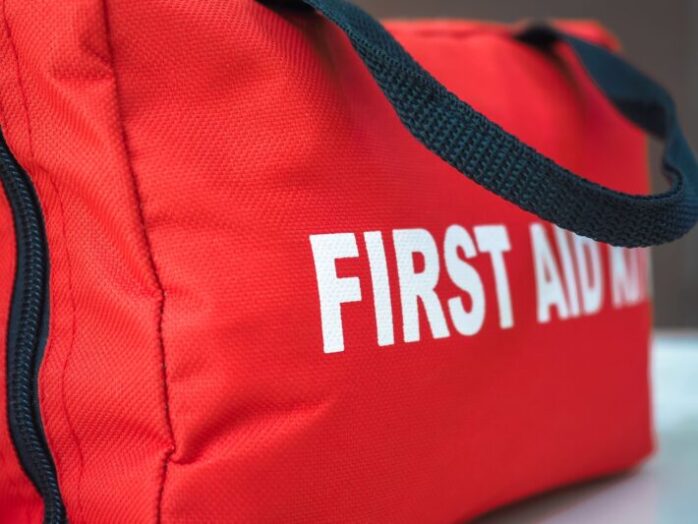
Here are some ways you can reduce pain without medication
- If you have sustained an injury, minimize the amount you use the affected area. If possible, rest, and recover. Only return to normal activities once you have the go-ahead from your health provider.
- Ice and heat are effective ways to reduce pain, make sure that the pack you are using is not too hot or cold.
- You can reduce swelling and pressure in an injured limb by elevating it.
Storage tips for your first aid kit
- Ensure that you check the expiry dates on your products regularly and replace them accordingly
- Make sure everyone in the household knows where the first aid kit is kept
- Keep it in a cool, dry area of the house
- Once you use a product, replace it quickly. This way you’ll never be without products when you need them the most
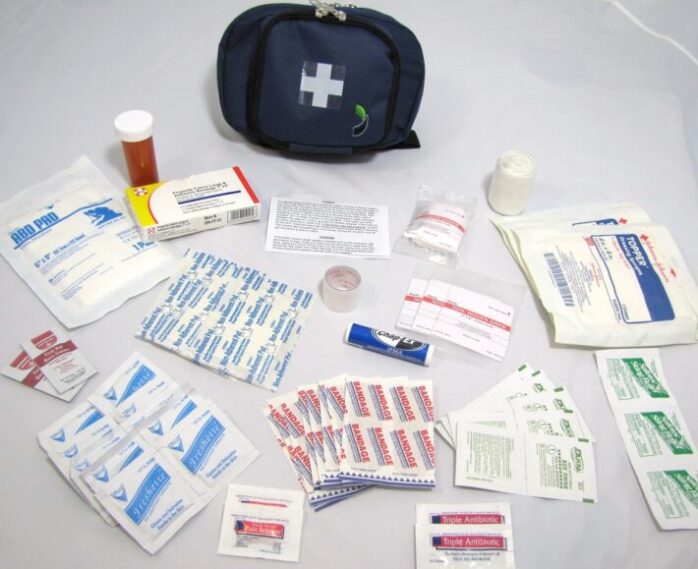
Learning how to use your first aid kit
It is a good idea to purchase a first aid book or do a first aid course so you can learn how to use your first aid kit properly. In serious situations, knowing how to do first aid could be the difference between life and death. We suggest you get a course on sites like tltraining.co.uk and learn how to use the first aid kit in a proper way! You never know when such skills can be useful.
Things to remember
- Ensure your home, car, and workplace have a first aid kit – you never know when you might need it
- You can buy a first aid kit from your local pharmacy or from us here at The First Aid Shop
- Ensure the items in your first aid kit are quality products
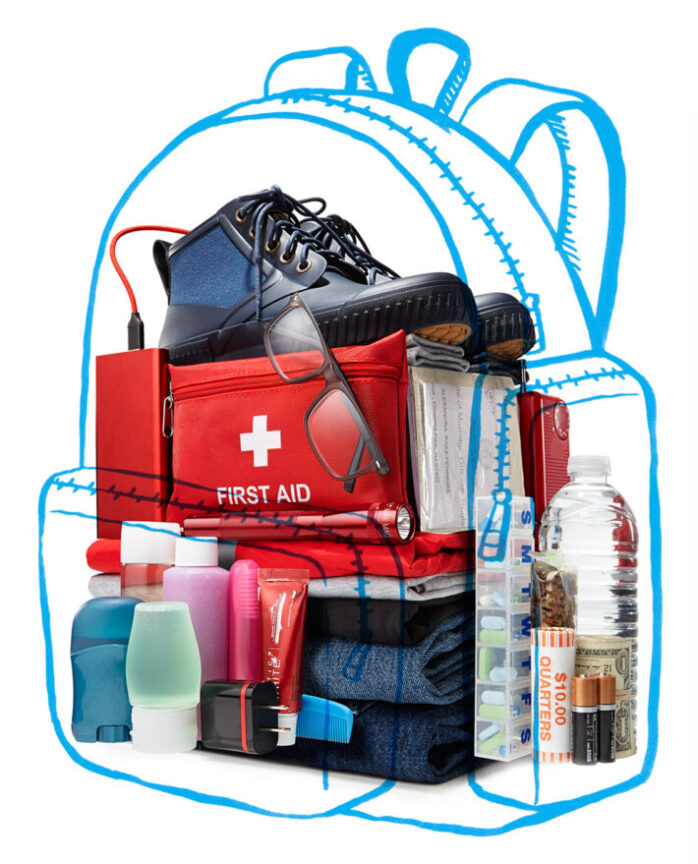
In case of emergency
First aid kits are designed to help with minor injuries and medical issues. For serious and life-threatening injuries, it is important that you seek medical assistance immediately by calling 000.
We have an extensive range of first aid supplies at The First Aid Shop, if you have any questions regarding items for your kit, give our friendly team a call today, we are happy to help.

